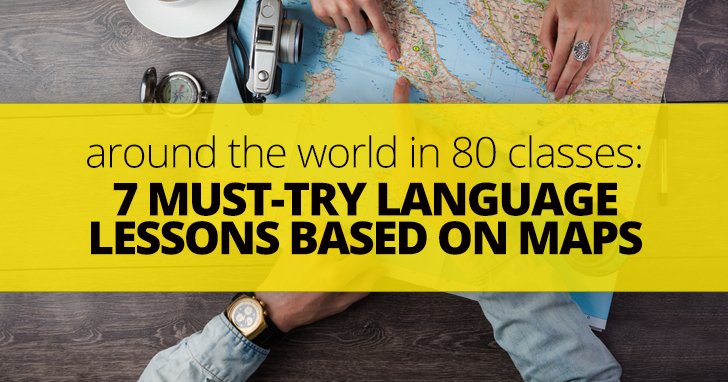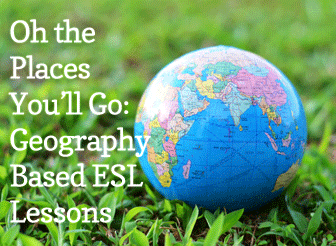Around the World in 80 Classes: 7 Must-try Language Lessons Based on Maps


Sometimes, though, a teacher finds that she needs to be more intentional about teaching geography to her ESL class. When that happens, here are some activities to try.
Have Map, Will Travel
Your students almost certainly have a reading component to their English studies, but how often does your class attempt to read nontraditional texts? Students studying ESL need skills for non-text reading just as much and perhaps more than mainstream students do. When you are talking about geography, bring in some maps of the city and state in which you live for your students to explore. Take some time at the beginning of your class to explain the key, which defines the symbols found on the map, the grid, which is used to locate cities and other landmarks on the map, and the additional information, which is given about the region pictured on the diagram in front of them.
Then set your students to explore the map with some comprehension questions to answer. Can they determine the distance between one location and another? Can they locate certain cities or areas of interest? Can they use the map to compile a set of directions from one area to another? Once your students have become familiar with the world of maps, challenge groups of three or four students to make a map of their own. Give each group a large piece of paper and ask them to make a map of your classroom. They will have to speak with each other to determine the symbols they will use to represent items on the map. They will also need to communicate how they will go about diagramming the map and what additional information they will need to include. Give your students class time to work on the project or assign it for homework. When all the maps are finished, display them in your classroom or in the hallway and ask students to compare the maps with one another. What information did other groups include that was helpful? Is there anything missing from any of the projects? What could each group have done to make their map more informative? Have your students discuss these questions in their groups as they debrief the activity.
A Picture is Worth a Thousand Words
You can marry geography and language by looking at pictures which have been taken in different areas around the world. Pair students and give them a picture to examine. Ask your students to make specific observations about the geography of the picture and write them down. What natural elements are in the picture? Encourage your students to avoid general words, like tree, and use more specific words, like maple tree or coconut palm. After your students have made observations about the terrain, have them look at the activities that are happening in the picture. Are the people working or relaxing? What kinds of work are they doing? After making specific observations about the people, your students should move on to buildings, landmarks, and natural features.
After your students have finished their detailed observations, ask them to make some conclusions based on their observations. What do they think the humans in the area have done to change the environment? What evidence can they use to support those conclusions? What observations did they make that can help them determine the climate and rainfall of the region? How do these environmental factors affect the way the people in that region live? Finally, ask your students what they would explore further if they could visit this place.
After the observation and interpretation of the first location, give each pair of students a second picture, and have them repeat the same activity with it. After they have answered the questions and made all their observations and comments, ask your students to compare the two locations. What is similar between the two areas? What is different? Which location appears to be a more difficult place to live? Have humans reacted in similar ways in both locations? Why or why not? Which would each student prefer? Close the activity by asking each student to make a guess as to where the pictures may have been taken.
You Can Google That
In today’s world of technology, knowledge is easier to acquire than any other time in history. With this in mind, have your students do some research on a particular city using the internet and a Google search or a site such as Google Earth. By typing the name of the city into the search engine, your students will be able to access plenty of information about the cities they have chosen. Give your students time to explore the web sites and take notes on what they have read. Then ask your students to use that information to compile travel scrapbooks about the cities they have visited. They can include pictures they have printed from the web sites, but they should also include personal observations about the location. After they have compiled these travel scrapbooks, give each student an opportunity to tell the class about his vacation with a short presentation. The era of the slide show may be over, but travelers today still like to talk about what they have experienced. After each presentation, allow your class to ask questions for additional information. If at any time during the school year one of your students visits another city or region, ask him to share some of his experiences with the class in a similar presentation, photos encouraged.
Perhaps giving today’s students abundant opportunities to learn about different areas of the globe, our world will become more understanding of her different people groups. If so, then there is most certainly a bright future ahead of us!